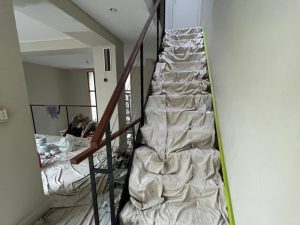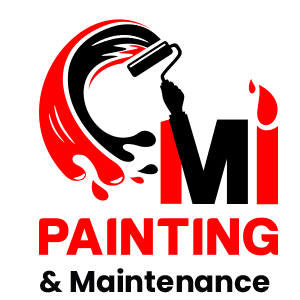What Is The Best Method For Plastering Internal Walls?

Have you ever dreamed of transforming your Sydney home with smooth, flawless walls? Plastering internal walls is a fantastic way to achieve a polished, high-end finish that elevates your entire space. But with so much information swirling around, figuring out the “best” method for plastering can feel overwhelming.
Fear not! This guide dives deep into the world of internal wall plastering, answering all your burning questions to create a stunning, lasting result.
What are the critical steps in plastering interior walls?
Plastering internal walls involves a meticulous process, but here’s a simplified breakdown:
- Preparation: This crucial step involves removing paint, wallpaper, or debris. Any cracks or uneven surfaces are addressed to ensure a smooth base for the plaster.
- Applying a base coat: A thin layer of plaster is applied to the prepared wall, creating a key for the subsequent layers to adhere to.
- Applying second and third Coats: These thicker coats build up the body of the plaster, achieving a level and even surface.
- Finishing touches: Once the final coat dries, it’s sanded smooth to create a flawless finish.
How do you prepare interior walls for plastering?
Proper preparation is paramount for successful plastering. Here’s what you need to do:
- Clear the canvas: Remove any existing paint, wallpaper, or fixtures that might hinder the plaster’s adhesion.
- Fix existing issues: Apply patching compound to address cracks, holes, or uneven surfaces to create a smooth base.
- Clean up: Thoroughly clean the walls with a damp cloth to remove dust, dirt, or grease that might affect the plaster’s bond.
- Prime time: Apply a primer suitable for plastering to ensure proper adhesion and create a uniform surface.
Which types of plaster are best for interior walls?
Choosing the correct type of plaster is crucial for achieving the desired finish. Here are some standard options:
- Gypsum plaster: Ideal for achieving a smooth, even finish. It dries quickly and is easy to apply.
- Lime plaster: Offers a breathable finish, ideal for older homes. It’s also more flexible and less prone to cracking.
- Cement plaster: This is used for areas requiring durability. It’s resistant to moisture but can be harder to work with.
- Clay plaster: Provides a natural finish and is excellent for eco-friendly projects. It’s also suitable for regulating indoor humidity.
Each type has its benefits, so choose based on your specific needs and the condition of your walls.
Is DIY plastering a good option, or should you hire professionals?
While DIY plastering is possible with extensive research and practice, it’s a highly skilled trade. Here’s why hiring professionals might be the better option:
- Expertise and experience: Qualified plasterers boast years of experience, ensuring a flawless finish that meets the highest standards.

- Time efficiency: Plastering internal walls requires a specific sequence and technique. Professionals complete the job efficiently, minimising disruption to your life.
- The right tools: Professional plasterers can access specialised tools and equipment, resulting in a superior outcome.
- Safety first: Plastering can be messy and involves working at heights. The gypsum plaster drying time can vary depending on temperature, humidity, and ventilation. Professionals have the experience to ensure the plaster dries efficiently and correctly, minimising potential issues.
What is the best method for plastering walls in older homes?
Plastering older homes requires extra care:
- Assess the existing plaster: Older plaster may be cracked or damaged. Assess the condition before proceeding.
- Repair and prep: Repair any damage and clean the wall thoroughly. You might need a bonding agent to help the new plaster adhere.
- Use lime plaster: Lime plaster is often the best choice for older homes as it’s flexible and matches the original material.
- Allow for breathing: Ensure the new plaster allows the wall to “breathe,” preventing moisture build-up and damage.
These steps ensure the new plaster integrates well with the existing structure and maintains the home’s integrity.
How can plastering improve the appearance of your space?
Plastering internal walls offers several aesthetic benefits:
- Flawless finish: Say goodbye to imperfections! Plastering creates a smooth, polished surface that elevates the overall look of your space.
- Enhanced style: Plaster allows for a wider variety of paint finishes and decorative techniques, letting you create a truly unique aesthetic.
- Increased value: Freshly plastered walls add a touch of luxury and sophistication, potentially boosting your property value.
How does plastering affect future painting projects?
Plastering has a significant impact on future painting:
- Smooth base: A well-plastered wall provides a smooth base for painting, ensuring an even coat and professional finish.
- Better adhesion: Properly plastered walls improve paint adhesion, reducing the risk of peeling or flaking.
- Longer-lasting finish: A solid plaster job can extend the life of your paint, saving you time and money on touch-ups.
- Colour accuracy: A smooth, even surface helps paint colours appear accurate and vibrant, enhancing the overall aesthetic of your space.
Investing in quality plastering ensures that your painting projects will look great and last longer.
What tools and techniques are used for plastering walls?
Effective plastering requires the right tools and techniques:
- Trowel: Essential for applying and smoothing plaster. A high-quality trowel ensures an even finish.
- Plastering float: Used to level the plaster and achieve a smooth surface.
- Sanding sponge: This helps to sand down any imperfections once the plaster is dry.
- Mixing tools: A mixing paddle and bucket blend the plaster to the right consistency.
- Techniques: Proper application techniques, such as working in small sections and using even pressure, are crucial for a smooth finish.
Using the right tools and techniques helps achieve a professional result and makes the plastering process more manageable.
How long does it take to complete the plastering process?
The duration of the plastering process depends on several factors:
- Wall condition: The extent of repairs or damage will affect the preparation time.
- Plaster type: Some types of plaster dry faster than others.
- Number of coats: The desired thickness of the plaster will determine the number of coats required.
- Drying conditions: Temperature, humidity, and ventilation influence the drying time.

While plastering can be time-consuming, the end result is worth the wait.
Don’t wait, plaster today!
Ready to transform your Sydney home with flawless plastering? Experience professional plastering at its finest with Mi Painting & Maintenance. Our experienced team offers:
- Free consultations: Let’s discuss your specific needs and goals.
- Tailored solutions: We’ll recommend the best plastering method for your space.
- Quality materials: We use only premium plaster products for a lasting finish.
- Attention to detail: Our meticulous approach ensures a flawless result.
- Competitive pricing: Enjoy affordable plastering services without compromising on quality.
Get a quote from Mi Painting & Maintenance, and let’s create the home of your dreams together.
